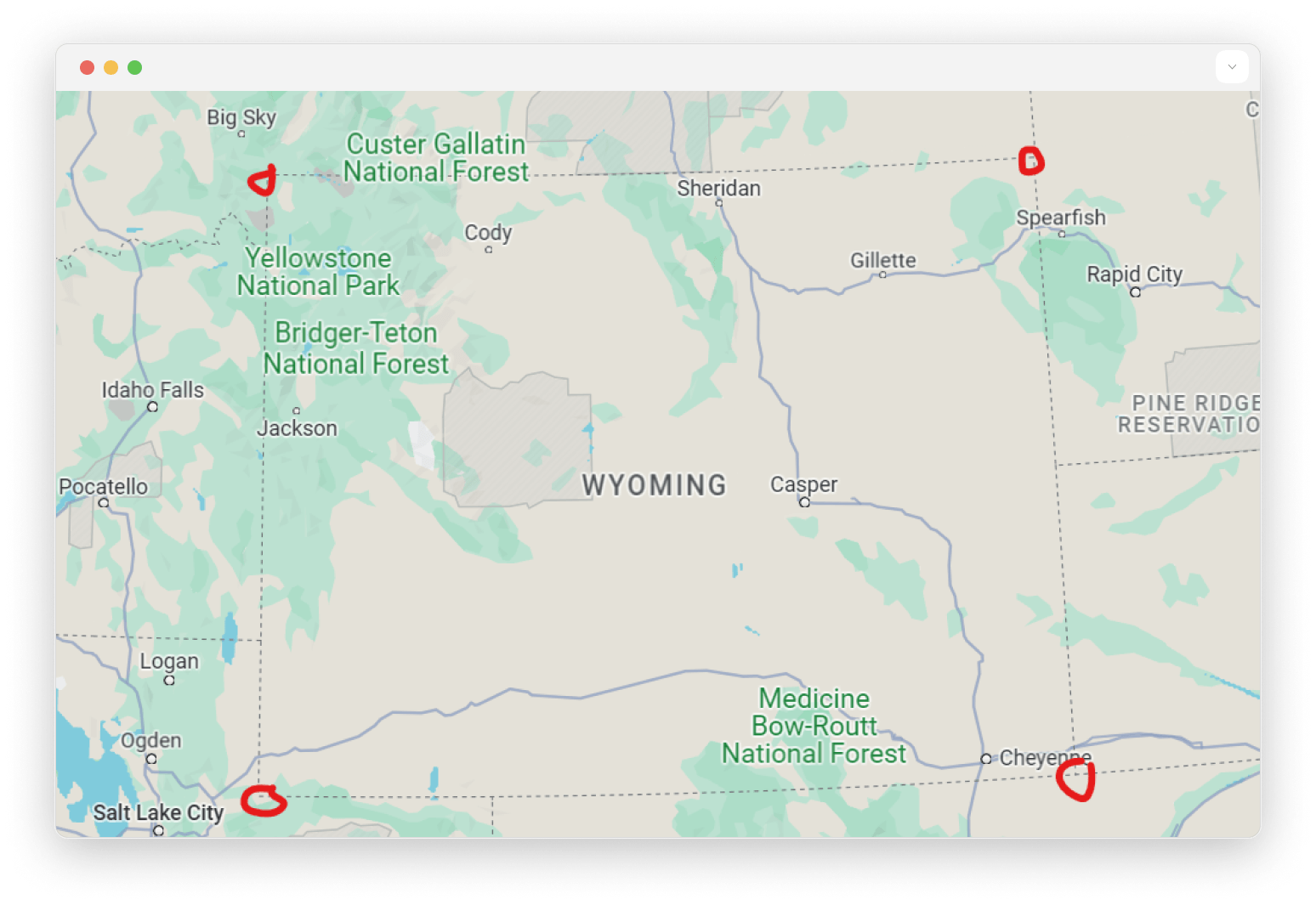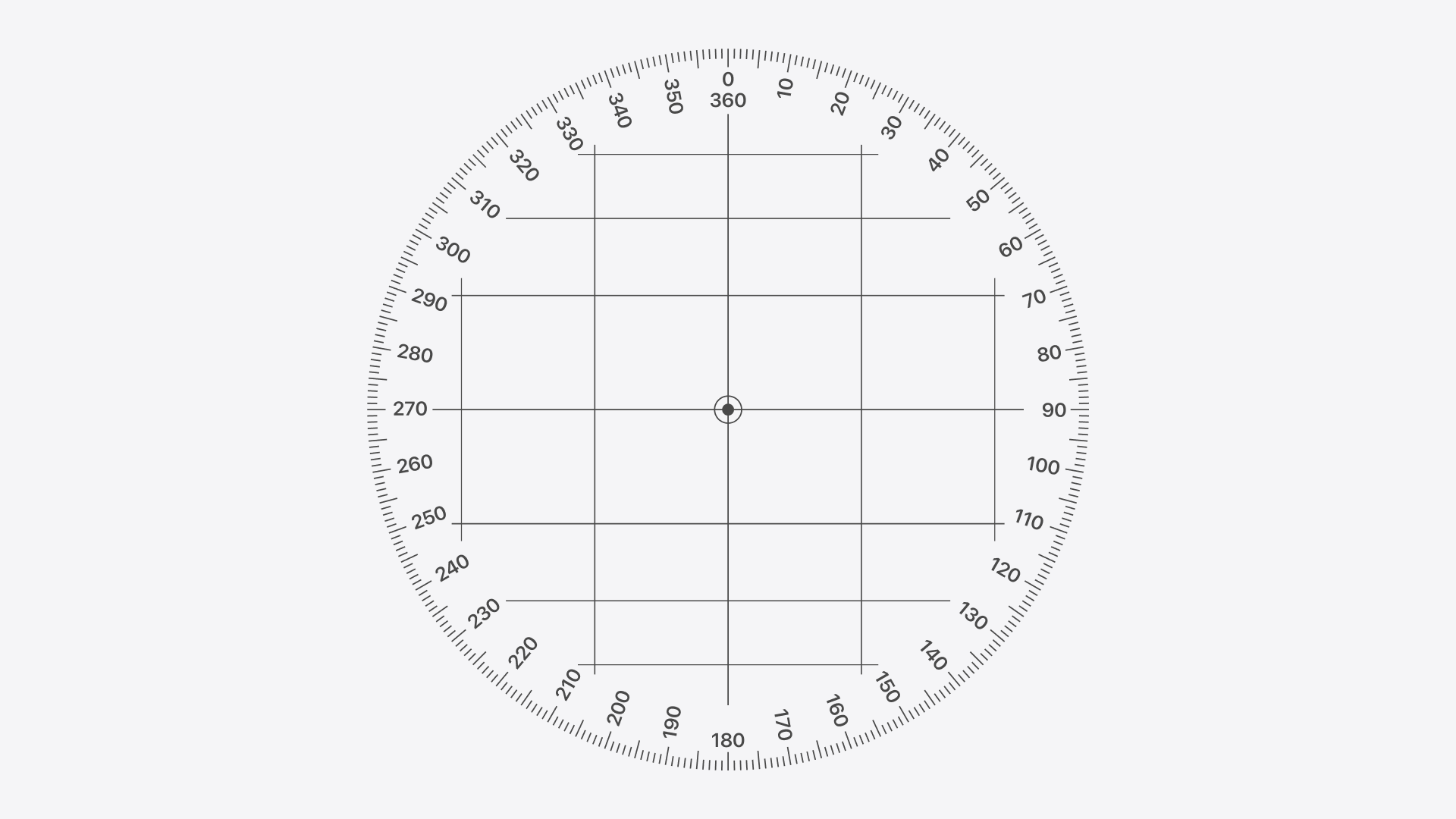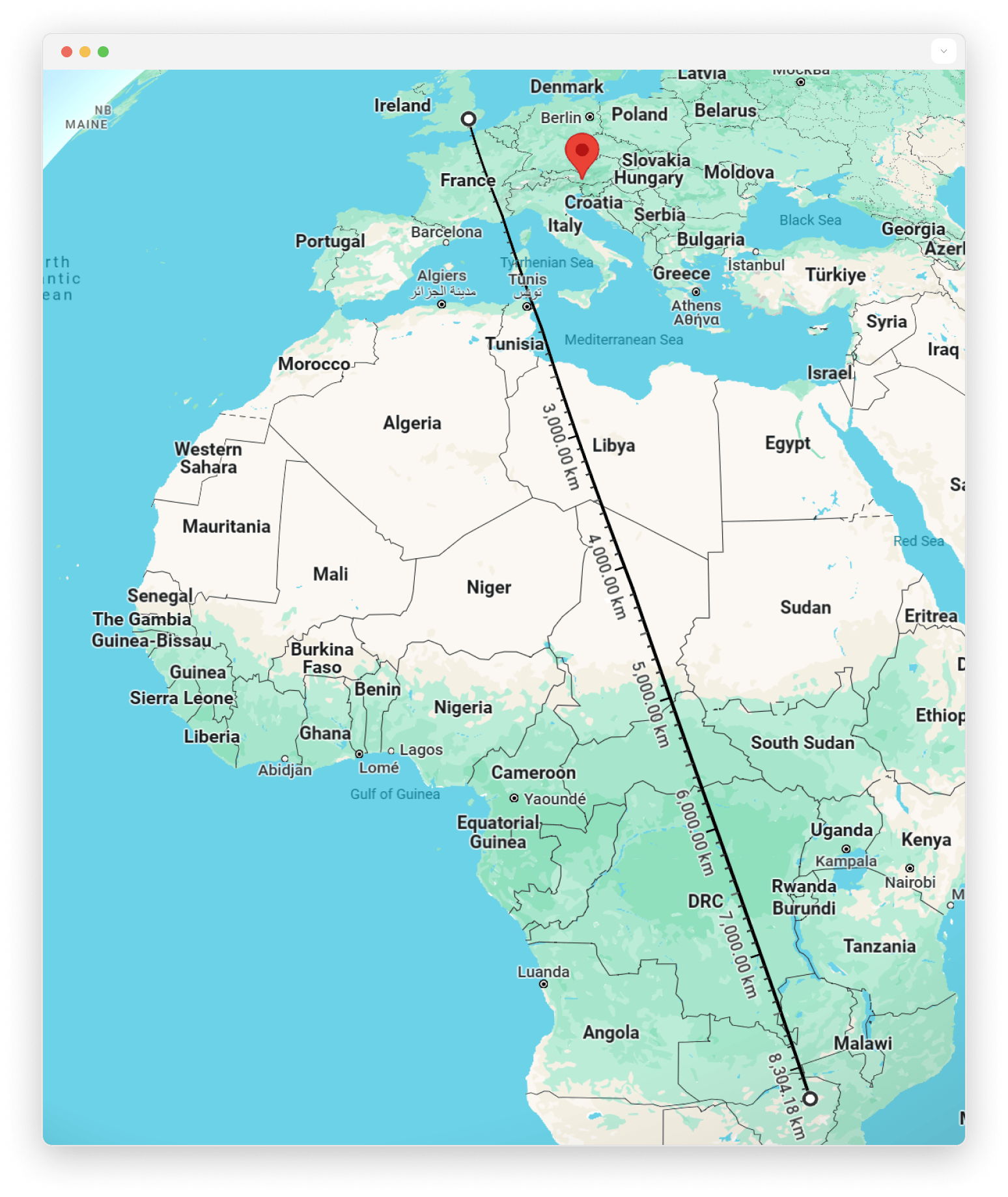Geo functions
These functions can be used when working with and analysing geospatial data.
| Function | Description |
|---|---|
geo::area() | Calculates the area of a geometry |
geo::bearing() | Calculates the bearing between two geolocation points |
geo::centroid() | Calculates the centroid of a geometry |
geo::distance() | Calculates the distance between two geolocation points |
geo::hash::decode() | Decodes a geohash into a geometry point |
geo::hash::encode() | Encodes a geometry point into a geohash |
Point and geometry
- A
pointis composed of two floats that represent the longitude (east/west) and latitude (north/south) of a location. - A
geometryis a type of object defined in the GeoJSON spec, of which Polygon is the most common. They can be passed in to the geo functions as objects that contain a "type" (such as "Polygon") and "coordinates" (an array of points).
geo::area
The geo::area function calculates the area of a geometry in square metres.
API DEFINITIONgeo::area(geometry) -> number
The following example shows this function, and its output, when used in a RETURN statement for four approximate points found on a map for the US state of Wyoming which has an area of 253,340 km2 and a mostly rectangular shape. Note: the doubled square brackets are because the function takes an array of an array to allow for more complex types such as MultiPolygon.


RETURN geo::area({
type: "Polygon",
coordinates: [[
[-111.0690, 45.0032],
[-104.0838, 44.9893],
[-104.0910, 40.9974],
[-111.0672, 40.9862]
]]
});
Response253317731850.3478f
If the argument is not a geometry type, then an EMPTY value will be returned:
RETURN geo::area(12345);
null
geo::bearing
The geo::bearing function calculates the bearing between two geolocation points. Bearing begins at 0 degrees to indicate north, increasing clockwise into positive values and decreasing counterclockwise into negative values that converge at 180 degrees.


API DEFINITIONgeo::bearing(point, point) -> number
The following example shows this function, and its output, when used in a RETURN statement:
-- LET used here for readability
LET $paris = (2.358058597411099, 48.861109346459536);
LET $le_puy_en_velay = (3.883428431947686, 45.04383588468415);
RETURN geo::bearing($paris, $le_puy_en_velay);
Response164.18154786094604


If either argument is not a geolocation point, then an EMPTY value will be returned:
RETURN geo::bearing(12345, true);
null
geo::centroid
The geo::centroid function calculates the centroid between multiple geolocation points.
API DEFINITIONgeo::centroid(geometry) -> number
The following example shows this function, and its output, when used in a RETURN statement. Note: the doubled square brackets are because the function takes an array of an array to allow for more complex types such as MultiPolygon.
RETURN geo::centroid({
type: "Polygon",
coordinates: [[
[-0.03921743611083, 51.88106875736589], -- London
[30.48112752349519, 50.68377089794912], -- Kyiv
[23.66174524001544, 42.94500782833793], -- Sofia
[ 1.92481534361859, 41.69698118125476] -- Barcelona
]]
});
The return value is a mountainous region somewhere in Austria:
Response(13.483896437936192, 47.07117241195589)


If either argument is not a geometry type, then an EMPTY value will be returned:
RETURN geo::centroid(12345);
null
geo::distance
The geo::distance function calculates the haversine distance, in metres, between two geolocation points.
API DEFINITIONgeo::distance(point, point) -> number
The following example shows this function, and its output, when used in a RETURN statement:
let $london = (-0.04592553673505285, 51.555282574465764);
let $harare = (30.463880214538577, -17.865161568822085);
RETURN geo::distance($london, $harare);
Response8268604.251890702f


If either argument is not a geolocation point, then an EMPTY value will be returned:
RETURN geo::distance(12345, true);
null
geo::hash::decode
The geo::hash::decode function converts a geohash into a geolocation point.
API DEFINITIONgeo::hash::decode(point) -> string
The following example shows this function, and its output, when used in a RETURN statement:
RETURN geo::hash::decode("mpuxk4s24f51");
Response(51.50986494496465, -0.11809204705059528)
If the argument is not a geolocation point, then an EMPTY value will be returned:
RETURN geo::hash::decode(12345);
null
geo::hash::encode
The geo::hash::encode function converts a geolocation point into a geohash.
API DEFINITIONgeo::hash::encode(point) -> string
The function accepts a second argument, which determines the accuracy and granularity of the geohash.
API DEFINITIONgeo::hash::encode(point, number) -> string
The following example shows this function, and its output, when used in a RETURN statement:
RETURN geo::hash::encode( (51.509865, -0.118092) );
"mpuxk4s24f51"
The following example shows this function with two arguments, and its output, when used in a select statement:
RETURN geo::hash::encode( (51.509865, -0.118092), 5 );
"mpuxk"
If the first argument is not a geolocation point, then an EMPTY value will be returned:
RETURN geo::hash::encode(12345);
null